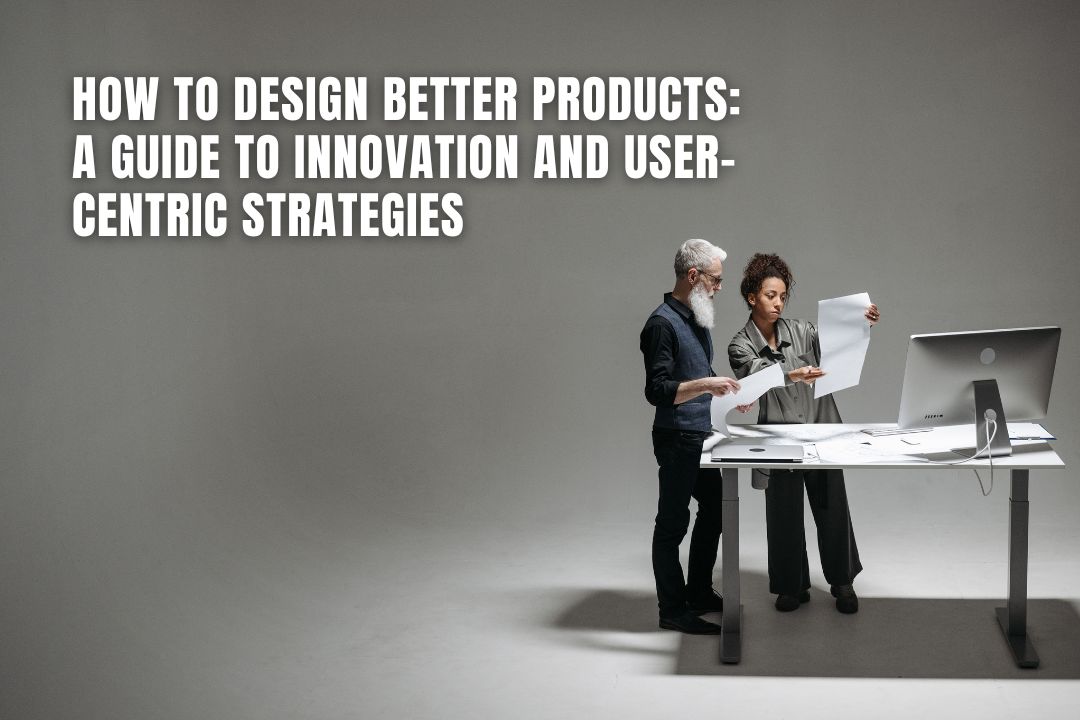
In today's fast-paced and highly competitive market, designing better products is crucial for business success and customer satisfaction. Innovative design not only sets products apart but also addresses the real needs and desires of users. Here’s a comprehensive guide to help you navigate the process of designing better products, leveraging user-centric strategies, and harnessing the power of innovation.
The cornerstone of effective AI product design is a deep understanding of your target users. Conducting thorough market research and user interviews can uncover invaluable insights into consumer behaviour, preferences, and pain points. Techniques such as creating personas and journey mapping can help visualise who your users are and what they truly need from your product.
Good design solves real problems. Start with identifying the core issues that your product needs to address. Use problem-solving methodologies like the "Five Whys" to drill down to the root of a problem and think critically about how your design can provide a practical and effective solution.
Encouraging a creative environment is essential for generating unique ideas. Promote brainstorming sessions that allow team members to think freely without judgement. Techniques like SCAMPER (Substitute, Combine, Adapt, Modify, Put to another use, Eliminate, and Reverse) can facilitate thinking outside the box and lead to innovative solutions.
Prototyping is a pivotal step in the design process. Early and iterative prototypes help to materialise ideas and test their feasibility. Use rapid prototyping tools to quickly create models of your product, allowing you to identify flaws and make adjustments early in the design process. This approach saves both time and resources in the long run.
Design thinking is a user-centric approach that encourages organisations to focus on the people they are creating for, leading to better products, services, and internal processes. It involves five phases: Empathise, Define, Ideate, Prototype, and Test. This iterative process ensures that designers are constantly considering the users’ needs at every stage of the design.
Incorporating feedback from users throughout the design process is crucial. Use both qualitative methods like user testing sessions and quantitative methods such as surveys to gather feedback. Analysing this data provides critical insights and helps refine the product to better meet the users’ needs.
While functionality is key, aesthetics also play a significant role in product design. A well-designed product not only performs well but also evokes emotions and connections with users. Consider elements like colour, shape, and material and how these can be used to enhance the user experience.
Sustainability is becoming increasingly important to consumers. Design products with sustainable practices in mind, considering the environmental impact of materials and the product lifecycle. This not only benefits the environment but also adds value for environmentally conscious consumers.
Before launching, rigorously test your product under different scenarios to ensure it performs well in all expected conditions. This testing should mimic real-world usage as closely as possible to minimise the risk of product failures after launch.
Finally, the process of designing better products is continuous. Every product launch is a learning opportunity. Gather insights from the success or failure of your products and use these lessons to inform future design projects.
By integrating these strategies, companies can create innovative and user-friendly products that stand out in the market. Remember, the goal of product design is not just to create something that looks good but to craft solutions that real people can use and benefit from every day.